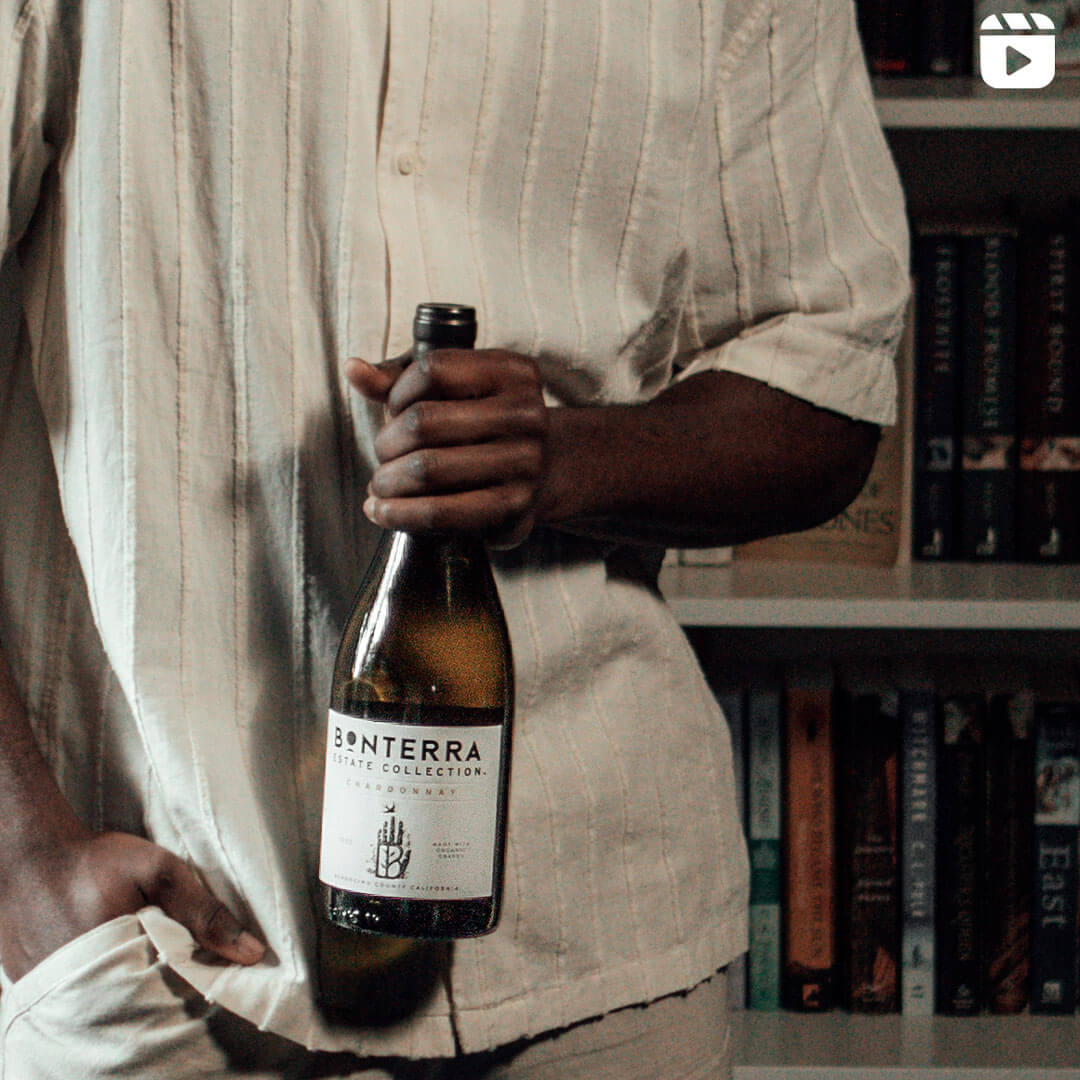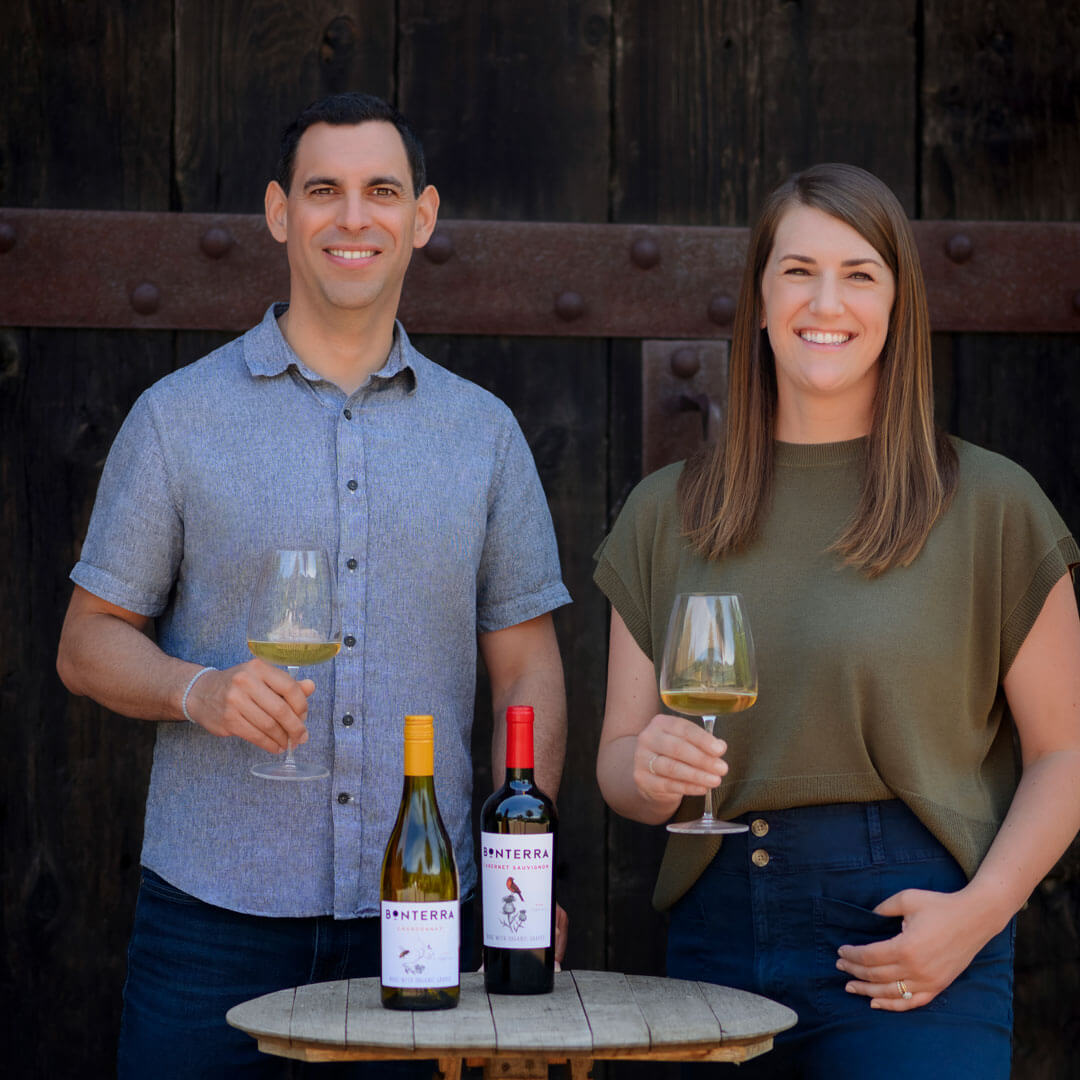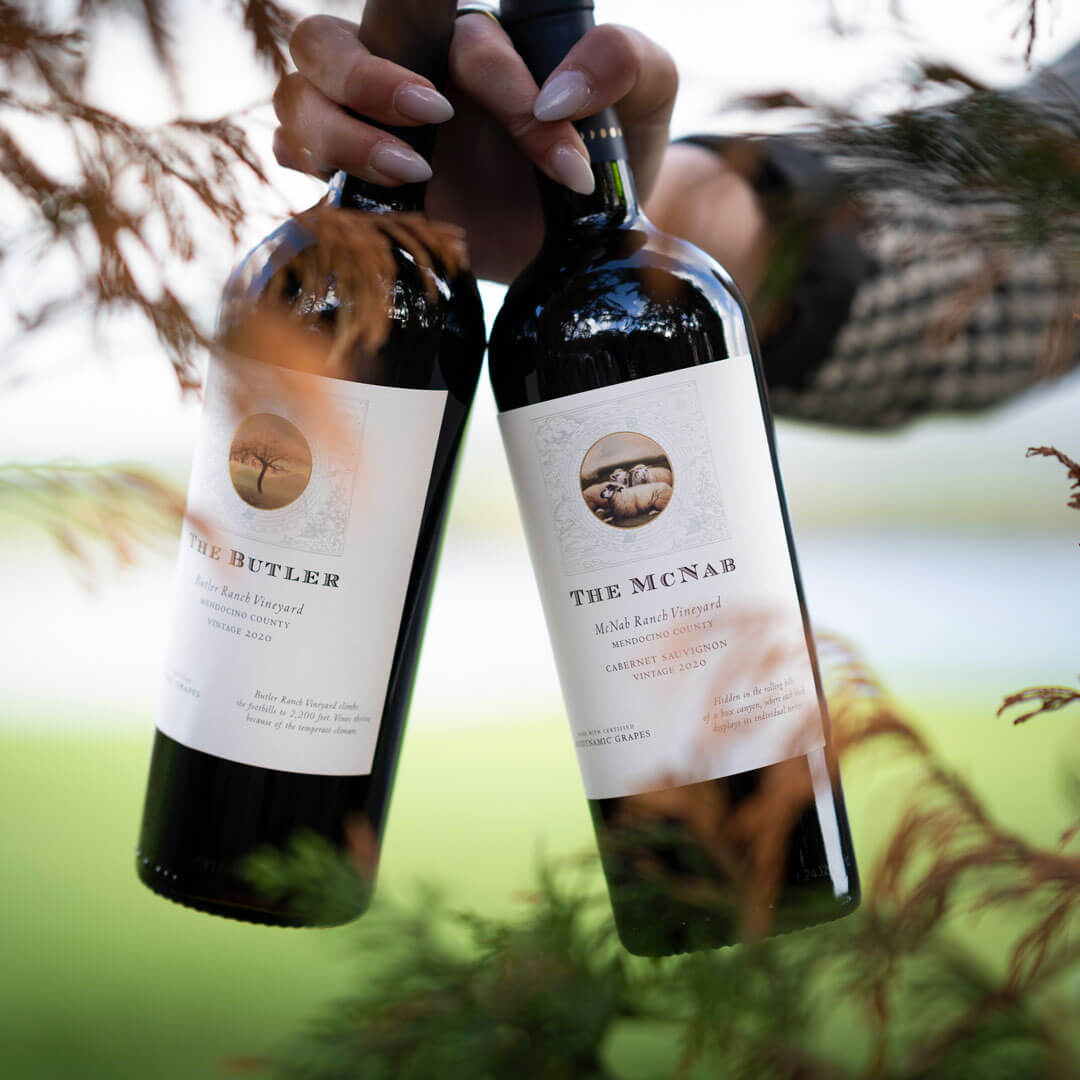The question “Is Zinfandel sweet or dry?” deserves a nuanced answer. Most red Zinfandel is decidedly dry, delivering bold fruit without leftover sweetness. White Zinfandel—made from the same grape—leans distinctly sweeter with its off-dry, rosé-style profile. And then there’s late-harvest Zinfandel, a dessert-worthy exception known for its concentrated richness.
With all these styles, it’s easy to see why Zinfandel wines can cause confusion. One grape, multiple expressions, and everything shaped by harvest timing and winemaking intent.
Knowing the difference helps you find the Zinfandel that fits your moment. At Bonterra, we focus on dry red Zinfandel that reflects the grape’s bold personality and sense of place, brought to life through organic farming and intentional winemaking. For those exploring different types of red wine, Zinfandel represents one of the most expressive and versatile varietals.
Brief History & Why Style Varies
Zinfandel’s journey to California began in Croatia, where the grape originated as Crljenak Kaštelanski before making its way to Italy as Primitivo, and eventually to American shores in the 1800s. California’s diverse climates and innovative winemakers transformed this European grape into something distinctly American.
The grape thrived in California’s warmer growing regions, particularly in areas like Lodi, Sonoma’s Dry Creek Valley, and our own Mendocino County. These sun-drenched locations allow Zinfandel to develop its characteristic bold fruit flavors and full body.
Why does the style of Zinfandel vary so dramatically? Several factors influence whether Zinfandel is dry or sweet in its final expression. The grape ripens unevenly on the vine, with some berries achieving high sugar levels while others lag behind—a phenomenon known as uneven ripening. Winemakers must decide when to harvest based on their desired style.
Region plays a crucial role as well. Cooler coastal areas produce Zinfandel with more restraint and balance, while warmer inland valleys create wines with concentrated fruit and higher alcohol. The winemaker’s philosophy determines everything—fermentation timing, residual sugar levels, and aging techniques all shape whether the wine tastes sweet or dry.
At Bonterra, we harvest Zinfandel from organically farmed vineyards when the grapes achieve full ripeness, fermenting the juice dry to showcase the varietal’s natural, bold fruit character.
Zinfandel Styles Explained
Dry Red Zinfandel
Dry red Zinfandel represents the grape’s most celebrated expression. These wines burst with ripe fruit flavors—blackberry, raspberry, and black cherry—alongside hints of black pepper, baking spices, and sometimes a subtle sweetness from oak aging rather than residual sugar.
The tannins in dry Zinfandel create structure without harshness, while the alcohol content typically ranges from 14% to 16% ABV. This higher alcohol comes from the grape’s natural ability to quickly accumulate sugar during ripening—sugar that’s converted to alcohol during fermentation rather than left behind as sweetness.
Our Bonterra Zinfandel showcases this classic dry style. The wine delivers jammy, indulgent red fruit notes with black pepper undertones, creating a bold yet balanced experience. The fruit intensity might suggest sweetness to some palates, but the wine finishes dry, without noticeable residual sugar.
This distinction matters: fruitiness doesn’t equal sweetness. A wine can taste of ripe, concentrated fruit while remaining technically and perceptibly dry. The absence of residual sugar allows food-pairing flexibility and creates a more structured, age-worthy wine.
White Zinfandel and Off-Dry Styles
White Zinfandel emerged in the 1970s as a happy accident that became a phenomenon. Despite its name, White Zinfandel is actually a rosé-style wine made from red Zinfandel grapes with minimal skin contact, producing its characteristic pale pink color.
Is White Zinfandel sweet or dry? Definitively sweeter. Most White Zinfandel contains noticeable residual sugar, creating an off-dry to sweet profile with flavors of strawberry, watermelon, and candy-like fruitiness. The wine’s lower alcohol content (around 9-10% ABV) and high residual sugar make it accessible to those who prefer sweeter wines.
Late-harvest Zinfandel represents another sweet expression. Winemakers leave grapes on the vine well past normal harvest, allowing sugars to concentrate as water evaporates. The resulting wine—sometimes labeled as “Port-style Zinfandel”—offers dessert-level sweetness with flavors of dried fruit, chocolate, and caramel.
These sweeter styles serve different purposes than dry Zinfandel. They appeal to different palates and pair with different foods, proving the grape’s remarkable versatility.
What Determines Sweetness in Zinfandel?
Understanding what makes Zinfandel sweet or dry requires looking at winemaking fundamentals.
Residual sugar represents the key factor. During fermentation, yeast converts grape sugars into alcohol. If fermentation completes fully, the wine finishes dry with minimal residual sugar (typically less than 3 grams per liter). If fermentation stops early—either naturally or through winemaker intervention—sugar remains in the wine, creating sweetness.
Dry red Zinfandel undergoes complete fermentation. The winemaker allows yeast to consume all available sugars, producing a wine that’s technically and perceptibly dry. The resulting alcohol content reaches 14-16% ABV, contributing body and warmth without sweetness.
White Zinfandel and off-dry styles stop fermentation early, preserving residual sugar. These wines might contain 15-30 grams per liter of residual sugar, creating noticeable sweetness. The lower alcohol content (9-10% ABV) reflects less sugar conversion.
Perception plays a role too. High alcohol can create a perception of sweetness even in dry wines—that warm, slightly viscous sensation on your palate. Ripe fruit flavors might also suggest sweetness to some tasters, even when no residual sugar exists.
Oak aging adds another dimension. Vanilla, toast, and caramel notes from oak can create sweetness perception without adding actual sugar. Our winemaking approach balances these elements carefully, ensuring the wine’s character remains clear.
Flavor Profile & Tasting Notes Across the Spectrum
The flavor journey from dry to sweet Zinfandel reveals the grape’s remarkable range.
Dry red Zinfandel offers bold, concentrated fruit—ripe blackberry, raspberry, and black cherry dominate. Black pepper adds spice, while baking spices like cinnamon and clove emerge from oak aging. Some examples show subtle earthiness or herbal notes, adding complexity to the fruit-forward profile.
Our Bonterra Zinfandel exemplifies this style with jammy red and black fruit, black pepper notes, and a hallmark boldness that makes it ideal for hearty foods. The wine’s intensity comes from ripe fruit character, not residual sugar—a distinction that becomes clear with the first sip.
White Zinfandel presents an entirely different profile. Expect flavors of strawberry, watermelon, and sometimes cotton candy sweetness. The wine feels light and refreshing, with crisp acidity balancing the residual sugar. It’s uncomplicated and approachable—exactly what many seek in a casual, sweet wine.
Late-harvest Zinfandel moves into dessert territory with concentrated flavors of dried fruits, fig, chocolate, and caramel. The sweetness becomes obvious and intentional, creating a wine that’s sipped slowly rather than paired with dinner.
This spectrum demonstrates why clarity matters when asking if Zinfandel is sweet or dry. The answer depends entirely on which style you’re experiencing.
Food Pairings for Zinfandel
The sweet-versus-dry question directly impacts food pairing success. Each style demands different culinary companions. For more pairing inspiration, explore our complete guide to red wine pairings to find your perfect match.
Pairing Dry Zinfandel
Dry Zinfandel’s bold fruit and peppery finish make it the perfect companion for equally bold foods. The wine’s structure and alcohol content allow it to stand up to intense flavors without being overwhelmed.
Barbecue becomes a natural pairing—whether you’re enjoying Kansas City-style ribs with sweet, tangy sauce or Texas brisket with dry rub. Our Zinfandel’s ripe fruit and pepper notes enhance the smokiness of grilled meats while its acidity cuts through rich sauces.
Grilled meats of all kinds work beautifully. Try Zinfandel with Italian sausages, lamb chops with herbs, or even game meats like venison. The wine’s boldness complements rather than competes with these savory proteins.
Hearty pasta dishes find a friend in dry Zinfandel as well. Rich meat sauces, spicy arrabbiata, or even mushroom-based preparations pair wonderfully. The wine’s fruit brightens tomato-based sauces while its structure supports creamy or meat-heavy dishes.
Aged cheeses—particularly those with crystalline texture like Parmigiano-Reggiano or aged Gouda—create delicious pairings. The wine’s complexity matches the cheese’s depth, creating a conversation between equals on your palate.
Pairing Sweeter Zinfandel Styles
White Zinfandel and off-dry styles require different pairing strategies. The residual sugar needs foods that either complement or contrast with sweetness.
Spicy cuisine becomes an ideal match for White Zinfandel. The wine’s sweetness tames heat beautifully—try it with Thai curries, spicy Chinese dishes, or even hot wings. The sugar provides relief from capsaicin burn while the wine’s fruitiness complements Asian flavor profiles.
Fruit-glazed proteins work wonderfully too. Pork chops with apple chutney, ham with pineapple glaze, or duck with cherry sauce all benefit from White Zinfandel’s sweet fruit character.
Lighter desserts—fruit tarts, angel food cake, or fresh berry preparations—pair well with off-dry Zinfandel without creating sugar overload. The wine’s sweetness matches the dessert’s intensity without overwhelming.
Late-harvest Zinfandel deserves special treatment. Pair it with chocolate desserts, blue cheese, or simply enjoy it as dessert itself—a glass of concentrated sweetness to end the meal.
What’s the Difference Between White Zinfandel and Red Zinfandel?
Despite coming from the same grape, White Zinfandel and red Zinfandel couldn’t be more different in style and winemaking.
Red Zinfandel undergoes traditional red winemaking. The grapes are crushed and the juice ferments with skins, seeds, and stems, extracting color, tannins, and flavor compounds. Fermentation continues until dry, producing a full-bodied red wine with 14-16% alcohol and bold fruit character.
White Zinfandel uses a different approach entirely. The grapes receive minimal skin contact—just enough to extract pale pink color—before the juice is pressed off and fermented separately. Fermentation stops early, preserving residual sugar and keeping alcohol low. The result is a light-bodied, sweet rosé with 9-10% alcohol.
The color difference is obvious: deep purple-red versus pale pink. But the structural and flavor differences run deeper. Red Zinfandel offers tannins, body, and complexity. White Zinfandel provides sweetness, lightness, and immediate accessibility.
One isn’t “better” than the other—they simply serve different purposes for different palates and occasions. Understanding these differences helps you choose appropriately for your preferences.
Which Zinfandel Should You Buy?
Your answer to “is Zinfandel dry or sweet?” determines which bottle belongs in your glass.
Choose dry red Zinfandel if you appreciate bold, structured wines with complexity. If you enjoy pairing wine with hearty meals, favor dry over sweet wines, or want a wine that ages gracefully, dry Zinfandel becomes your ideal choice. Our Bonterra Zinfandel offers this classic expression, showcasing black pepper and jammy fruit character from organically farmed vineyards.
Select White Zinfandel or off-dry styles if you prefer sweeter rosé wine or are newer to wine drinking. These approachable options work beautifully for casual gatherings, spicy foods, or simply when you want something refreshing and uncomplicated.
Consider the occasion as well. Dry Zinfandel suits autumn and winter celebrations, barbecues, and dinner parties where wine takes center stage. White Zinfandel fits summer afternoons, picnics, and moments when you want something light and easy.
Don’t hesitate to explore across the spectrum. Understanding both styles deepens your appreciation for this versatile grape and helps you discover your personal preferences.
At our organic winery, we believe in wines that express their origin clearly. Bonterra dry Zinfandel embodies California’s sun-drenched warmth while maintaining the balance that comes from healthy, living soil. We invite you to experience how organic farming elevates even the boldest varietals.
The answer to whether Zinfandel is sweet or dry ultimately depends on which expression you choose. Most wine lovers seeking “Zinfandel” want the classic dry red style—bold, spicy, and perfect for food. Now you understand exactly what to expect and how to select the Zinfandel that matches your palate.
Explore our wine online and consider joining our wine club to discover organically farmed Zinfandel and other varietals that honor both craft and earth.
REFERENCES
Wine Enthusiast. (n.d.). Zinfandel Wine Ratings, Reviews and Basics. Wine Enthusiast.
https://www.wineenthusiast.com/varietals/zinfandel/Wine Folly. (n.d.). Zinfandel Wine Guide: Taste, Styles & Pairings. WineFolly.com.
https://winefolly.com/grapes/zinfandel/




